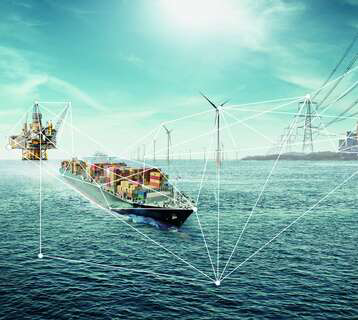DNV rules updated with world first CO2 reconditioning notation
Oslo, Norway, 10 July 2025: Classification society DNV has published the latest update to its rules for classification of ships and offshore structures. Several of the new notations are designed to support the carbon capture and storage sector (CCS). Including the first class notation covering the reconditioning of CO2 before pumping and transfer into a well or other reception point.

This year will see several of the latest large scale industrial carbon storage and injection projects move from paper to reality, a big step in the development of a new shipping and offshore sector. To support this ongoing innovation, DNV has introduced a new class notation for vessels with equipment designed to condition CO₂ prior to injection into an offshore reservoir or another receiver- CO₂ RECOND. In addition, new qualifiers have been developed for the existing offshore class rules: CO₂ for the DRILL notation, covering systems drilling CO₂ injection wells, and CCW for the Abate notation, for production units engaged in carbon capture from well streams.
Geir Dugstad, DNV Maritime’s Global Technical Director, said: “Being at the forefront of classification, means helping the industry to lead rather than follow. The new CCS focused rules are developing and expanding a rule framework to help customers working in this new sector. In addition, we continue to expand the options for our customers to deploy new fuel types and enhance efficiency, today or in the future. Because, at DNV we want to enable our customers to set out their vision of the future, innovate to deliver that vision, and build trust in the market by working to rigorous, independent, rules and standards.”
The continued industry focus and public interest on enhancing the sustainability of shipping and offshore is reflected in the ongoing updates to the requirements for the use of alternatives fuels, as well as the development of the new Hydrogen qualifier for Fuel ready vessels – designed to enable ships to prepare for the later adoption of the fuel. The deployment of Wind Assisted Propulsion Systems (WAPS) has been surging in recent years and the new WAPS ready notation allows owners to plan for future installations.
For many companies demonstrating their commitment to innovation while building success on a foundation of sustainability has been a challenge. But the UN Sustainable Development Goals (SDGs) offer the opportunity for forward looking organizations to show how they are responding to challenges of global importance. This is of particular importance to the offshore sector, so with this in mind DNV has developed a new Offshore class Sustainability notation, for showing compliance with UN SDGs.
Some of the other notable additions and changes to the rules include:
- New qualifier for Offshore service vessel, T-LOG, for enhanced reporting of anchor handling operations
- Revision of the rules on water jets
- Revised assessment methods for propellers and clarified requirements on thrusters
- Update of the Walk2work notation including a new in-operation notation for walk to work systems
- New in-operation class notation Clean, clarifies requirements for ship owners and managers
- New MIM class notation for mooring integrity management
Publication of the new rules took place on 1 July and the new rules will enter into force on 1 January, 2026. To find out more head to https://standards.dnv.com/